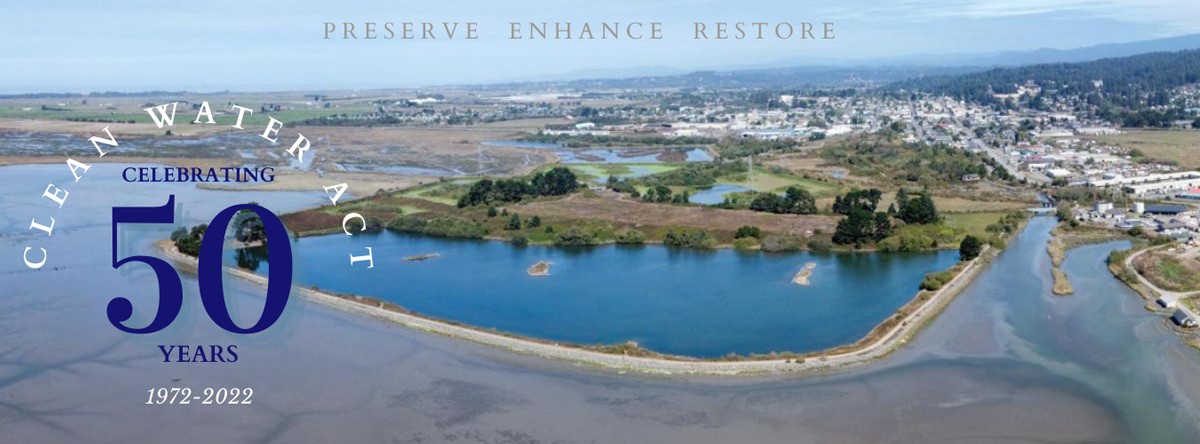Clean Water Act Success Story: Arcata Marsh and Wildlife Sanctuary

The Arcata Marsh and Wildlife Sanctuary, located on the edge of Humboldt Bay, is home to the City of Arcata’s wastewater treatment facility which uses oxidation ponds and freshwater marshes to treat wastewater using bacteria, plants and sunlight. Covering more than 300 acres, the treatment marshes don’t just clean the city’s wastewater, they also provide scenic bike paths, hiking trails, and refuge for 300 species of birds.
The wetlands where the facility now sits were once an important source of food, transportation and trade for the Wiyot people. When European-Americans settled the area, they began altering the landscape. Among other impacts from mining, lumber, agriculture and dairy activities, a canal was constructed, and marshland was diked. Furthermore, raw sewage was being dumped into the bay.
With the passage of the Clean Water Act, The Water Boards began regulating point source discharges of pollutants into state waters through the National Pollutant Discharge Elimination System (NPDES) Program. Examples of point source pollutants include rock, sand, dirt, and agricultural, industrial, and municipal waste.
The wastewater facility started as a state-authorized pilot project in 1979 with the goal of demonstrating that wastewater treatment with plants and sunlight was viable. The project’s success led to the State Water Boards’ approval to construct a full-scale wetland treatment system in 1983. The city’s innovative system has proven to be a great reuse of wastewater, providing wetland habitat, recreational opportunities (averaging over 300 visitors per day), and opportunities for research and environmental education.
In 1989, the non-profit, Friends of Arcata Marsh, was formed which leads free interpretive walks and educates the public about the marsh and its many inhabitants. In 1993, an interpretive center was opened which offers exhibits, free maps and literature, a bookstore, bird lists and a log of recent bird sightings.
Over the years, additional project enhancements have included tide lands restoration, breaching of dikes, removal of tidegates, and restoring creek connectivity. The Marsh and Wildlife Sanctuary is recognized as a model system and has received international recognition and numerous awards, including as a municipal planning design, a cost-effective public utility operation, a natural resource project, and for urban redevelopment.
Ongoing maintenance has kept the treatment plant in operation; however, the impacts of aging infrastructure are now evident. In order to replace older system parts, comply with the requirements of the Regional Water Quality Control Board, and address impacts of climate change, the Wastewater Treatment Facilities Improvements Project was launched in 2020 and is scheduled to be completed in 2025.



